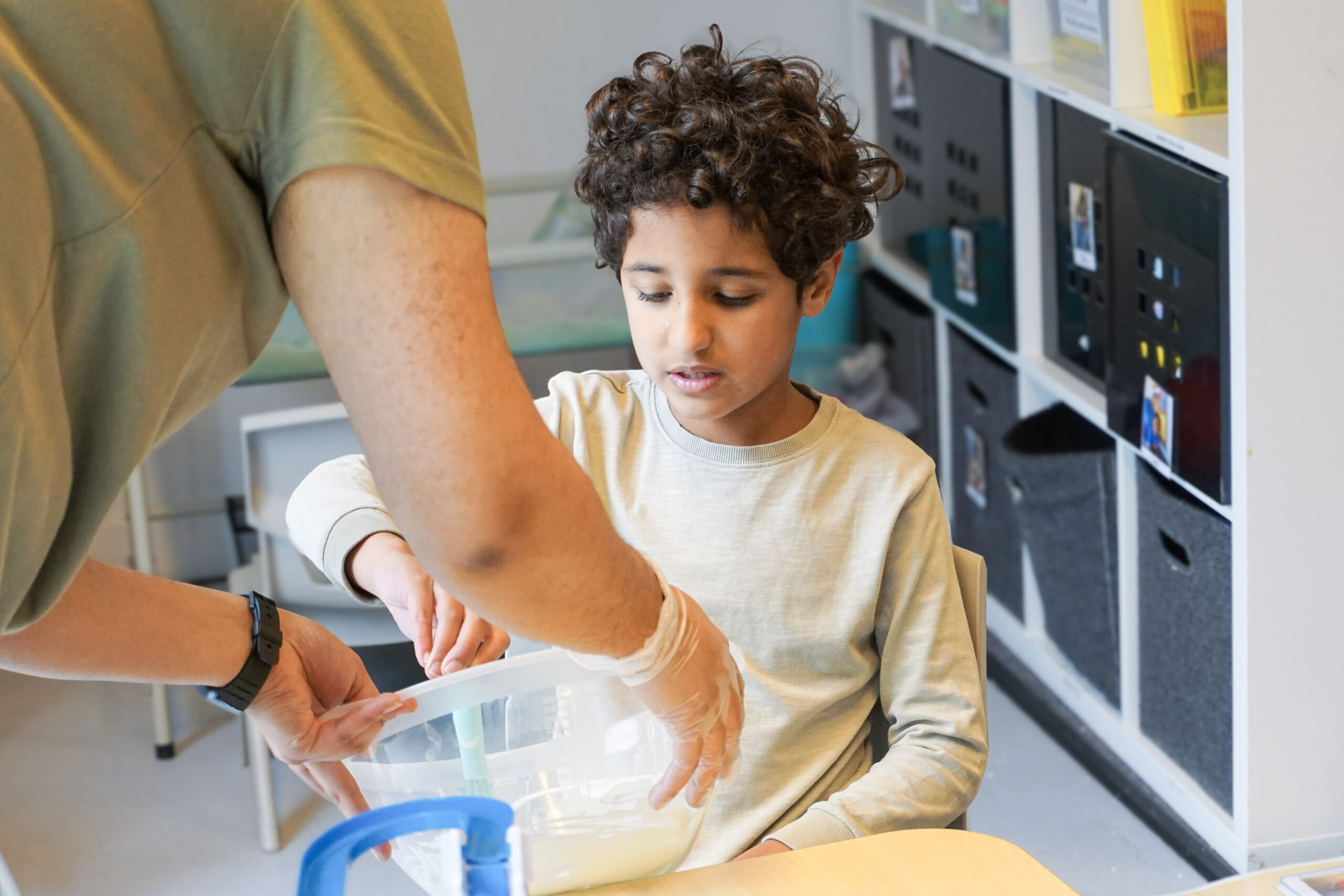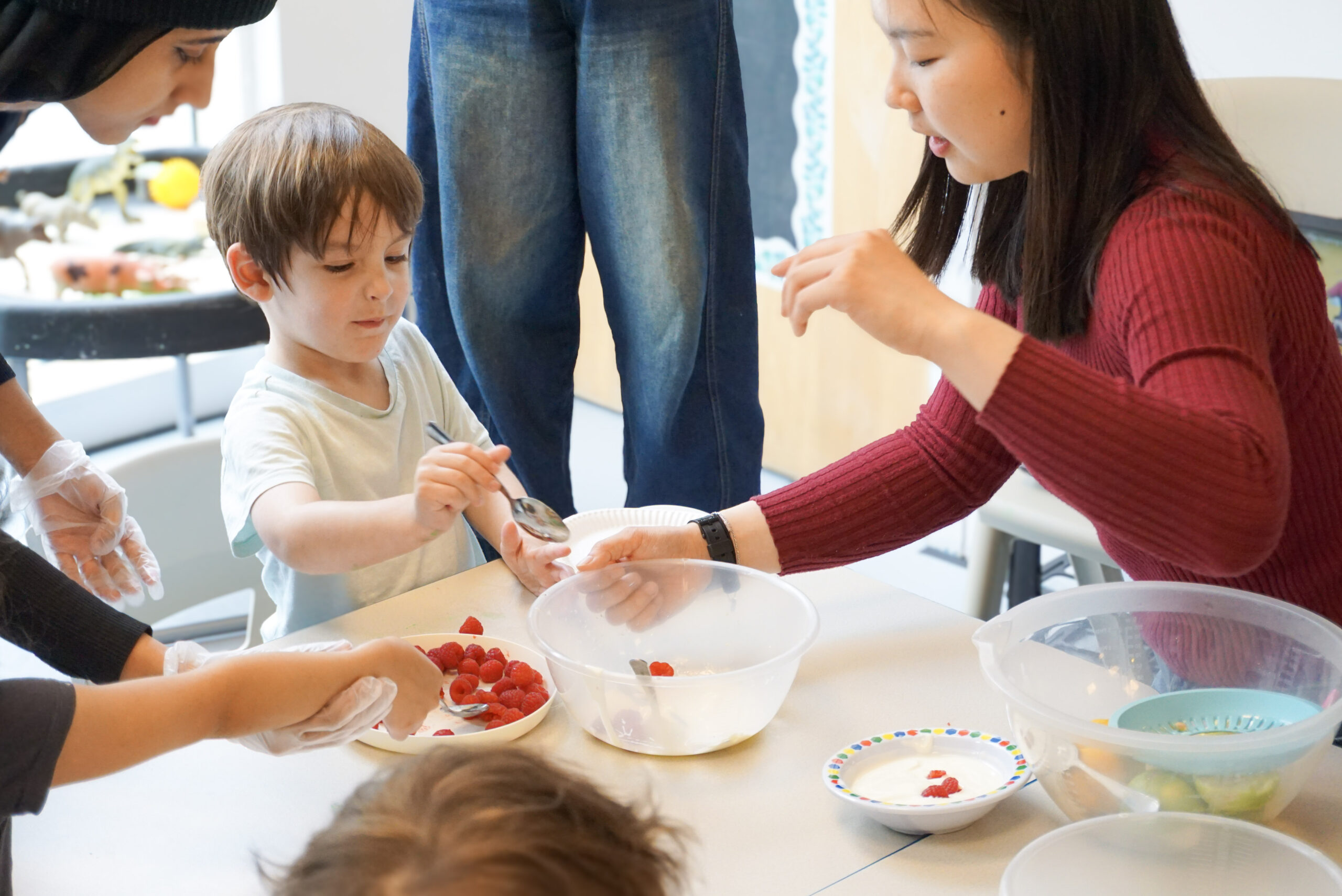
At First Bridge Education, food technology is not about cooking; it is a structured and therapeutic gateway into the sensory world for children with autism.
Recently, our pupils took part in making lemon mousse, a light and tangy dessert, as part of their weekly Food Tech curriculum. This activity not only supported developing motor and life skills, but it also supported our ongoing work in helping children with autism navigate food aversion in a way that is empowering, respectful, and rooted in evidence-based practice.
Understanding Food Aversion in Autism
Food aversion is one of the most common challenges faced by autistic children. According to research, sensory sensitivities such as heightened responses to texture, temperature, or even colour, play a significant role in shaping a child’s relationship with food. A child may gag at a mushy texture, panic if foods are touching on the plate or refuse anything that smells “too strong.” For some families, mealtimes become a source of stress and concern.
At First Bridge, we understand that food refusal develops through a combination of sensory challenges, emotional responses and learning over time to only eat ‘safe’ foods. Our approach is designed to reduce the child’s fears around trying new foods, by increasing familiarity with food through structured, positive exposure.
Why Lemon Mousse?
This week’s activity focused on creating lemon mousse using raspberries, cream, lemon and lime juice. These ingredients were selected deliberately to offer a range of sensory experiences:
- Texture: Smooth whipped cream and soft raspberries allow for gentle tactile exploration.
- Temperature: Cold mousse helps desensitise children who may be averse to chilled foods.
- Smell and Taste: The bright citrus scents of lemon and lime are stimulating but not overpowering, ideal for gradual sensory introduction.
Crucially, the mousse could be touched, smelled, stirred, spooned, or tasted, giving each child the opportunity to interact in the way that was right for them.
Our Approach: Low-Pressure, High-Structure
We apply four key strategies when supporting children with food issues, as outlined in our blog post “Why Won’t My Child Try New Foods?”:
- Routine and Structure – Regular Food Tech sessions offer predictable, supportive environments for food exploration.
- Sensory Gradation – We design tasks with layered sensory inputs to scaffold tolerance.
- Familiar Pairing – New ingredients are introduced alongside well-tolerated ones (like pairing lemon cream with familiar raspberries).
- No Pressure to Eat – We celebrate interaction, not consumption. Every step counts, from touching, to smelling, to mixing, to trying a bite.
Building Lifelong Skills
Food Tech is embedded in our broader curriculum because it supports communication, sensory regulation, independence, and daily living skills. Whether through PECS, Proloquo2Go, verbal communication, or visual schedules, our pupils are guided to make choices, express preferences, and develop confidence with food.
For autistic children, overcoming food aversion is not about eating more; it is about feeling safe and respected in their experiences. At First Bridge, we honour every child’s sensory profile and meet them where they are.
What Does Progress Look Like?
As the photos show, every child engaged with the mousse-making activity in their own way. One child practised scooping and stirring with gentle support from their ABA therapist, working on motor coordination and hand strength. Another explored raspberries by touch, counting and naming. A third focused intently on whisking the cream, delighted by the sensory feedback.
For some children, success meant taking a single raspberry to their lips. For others, it meant mixing ingredients or observing their peers calmly. All of these are celebrated milestones, especially for children with longstanding food challenges.


